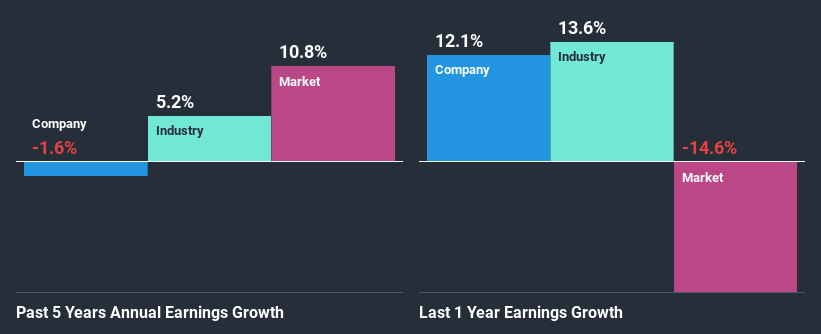Is British American Tobacco p.l.c.'s (LON:BATS) Stock Price Struggling As A Result Of Its Mixed Financials?
It is hard to get excited after looking at British American Tobacco's (LON:BATS) recent performance, when its stock has declined 6.7% over the past three months. It is possible that the markets have ignored the company's differing financials and decided to lean-in to the negative sentiment. Fundamentals usually dictate market outcomes so it makes sense to study the company's financials. In this article, we decided to focus on British American Tobacco's ROE.
Return on equity or ROE is a key measure used to assess how efficiently a company's management is utilizing the company's capital. Simply put, it is used to assess the profitability of a company in relation to its equity capital.
Check out our latest analysis for British American Tobacco
How Do You Calculate Return On Equity?
Return on equity can be calculated by using the formula:
Return on Equity = Net Profit (from continuing operations) ÷ Shareholders' Equity
So, based on the above formula, the ROE for British American Tobacco is:
10% = UK£6.6b ÷ UK£63b (Based on the trailing twelve months to December 2020).
The 'return' is the yearly profit. One way to conceptualize this is that for each £1 of shareholders' capital it has, the company made £0.10 in profit.
Why Is ROE Important For Earnings Growth?
Thus far, we have learned that ROE measures how efficiently a company is generating its profits. We now need to evaluate how much profit the company reinvests or "retains" for future growth which then gives us an idea about the growth potential of the company. Assuming all else is equal, companies that have both a higher return on equity and higher profit retention are usually the ones that have a higher growth rate when compared to companies that don't have the same features.
British American Tobacco's Earnings Growth And 10% ROE
To start with, British American Tobacco's ROE looks acceptable. Yet, the fact that the company's ROE is lower than the industry average of 14% does temper our expectations. Further, British American Tobacco's five year net income growth of -1.6% is more or less flat. Not to forget, the company does have a decent ROE to begin with, just that it is lower than the industry average. Therefore, the flat earnings growth could be the result of other factors. Such as, the company pays out a huge portion of its earnings as dividends, or is faced with competitve pressures.
We then compared British American Tobacco's net income growth with the industry and found that the average industry growth rate was 7.3% in the same period.
Earnings growth is an important metric to consider when valuing a stock. It’s important for an investor to know whether the market has priced in the company's expected earnings growth (or decline). This then helps them determine if the stock is placed for a bright or bleak future. Is British American Tobacco fairly valued compared to other companies? These 3 valuation measures might help you decide.
Is British American Tobacco Using Its Retained Earnings Effectively?
With a high three-year median payout ratio of 74% (implying that the company keeps only 26% of its income) of its business to reinvest into its business), most of British American Tobacco's profits are being paid to shareholders, which explains the absence of growth in earnings.
Additionally, British American Tobacco has paid dividends over a period of at least ten years, which means that the company's management is determined to pay dividends even if it means little to no earnings growth. Based on the latest analysts' estimates, we found that the company's future payout ratio over the next three years is expected to hold steady at 66%. As a result, British American Tobacco's ROE is not expected to change by much either, which we inferred from the analyst estimate of 12% for future ROE.
Conclusion
On the whole, we feel that the performance shown by British American Tobacco can be open to many interpretations. Primarily, we are disappointed to see a lack of growth in earnings even in spite of a moderate ROE. Bear in mind, the company reinvests a small portion of its profits, which explains the lack of growth. With that said, we studied the latest analyst forecasts and found that while the company has shrunk its earnings in the past, analysts expect its earnings to grow in the future. To know more about the latest analysts predictions for the company, check out this visualization of analyst forecasts for the company.
This article by Simply Wall St is general in nature. It does not constitute a recommendation to buy or sell any stock, and does not take account of your objectives, or your financial situation. We aim to bring you long-term focused analysis driven by fundamental data. Note that our analysis may not factor in the latest price-sensitive company announcements or qualitative material. Simply Wall St has no position in any stocks mentioned.
Have feedback on this article? Concerned about the content? Get in touch with us directly. Alternatively, email editorial-team (at) simplywallst.com.

 Yahoo Finance
Yahoo Finance 
